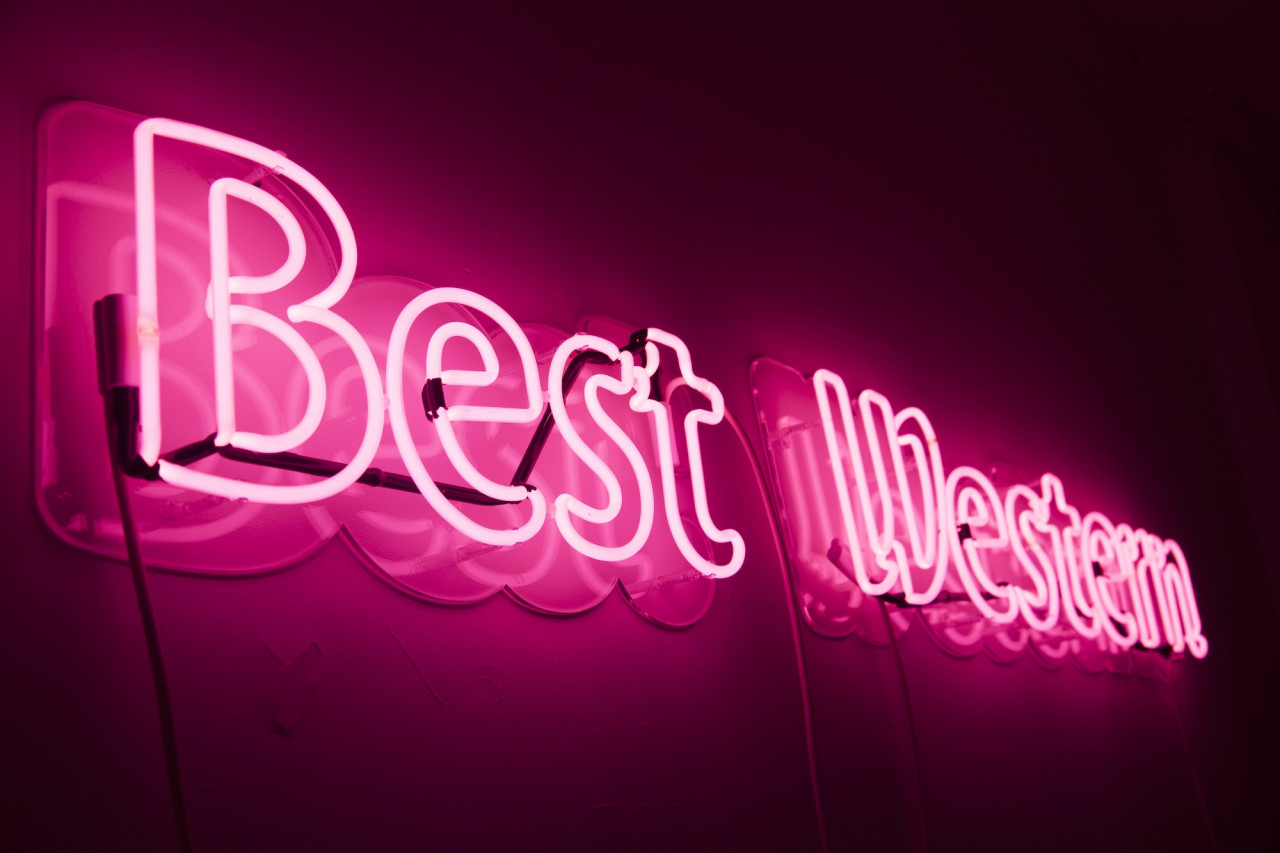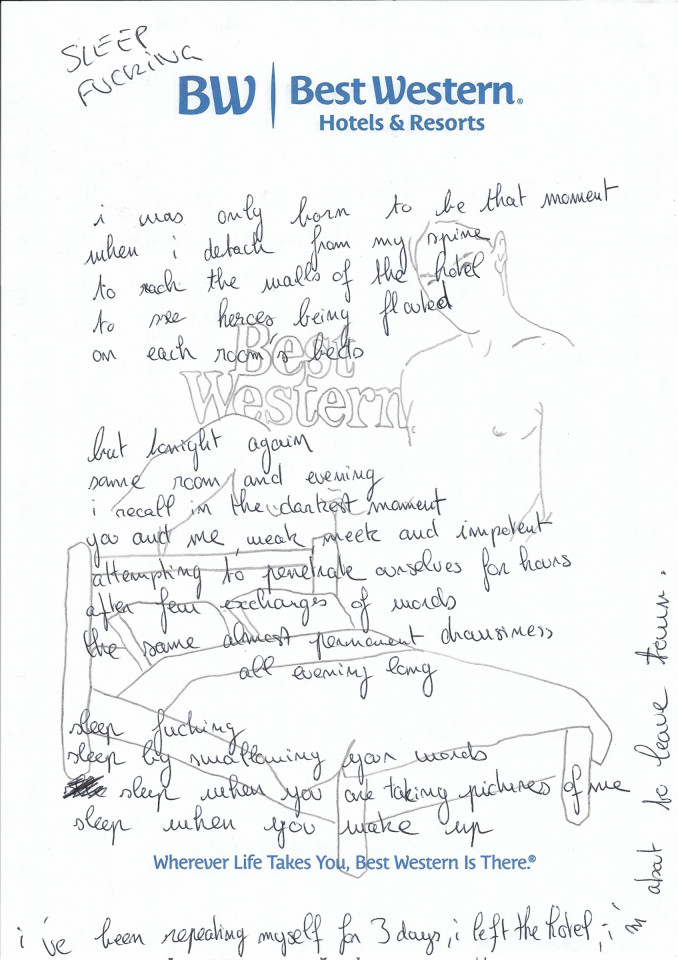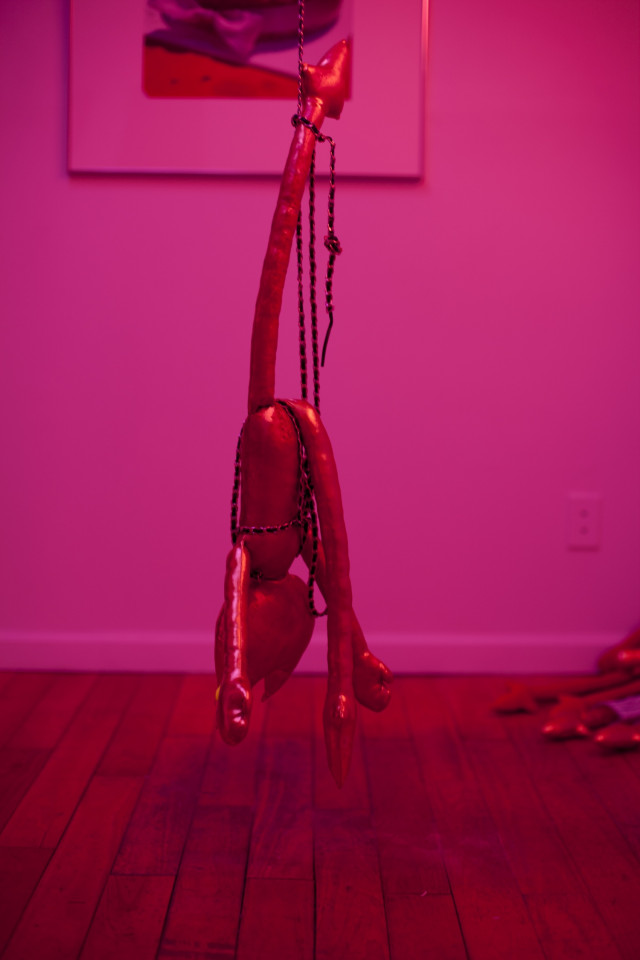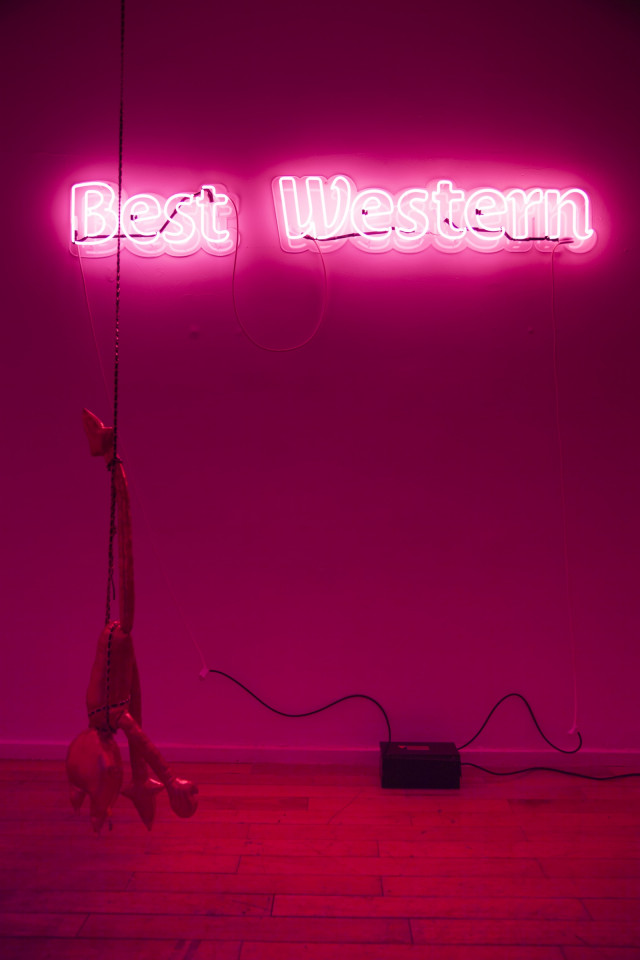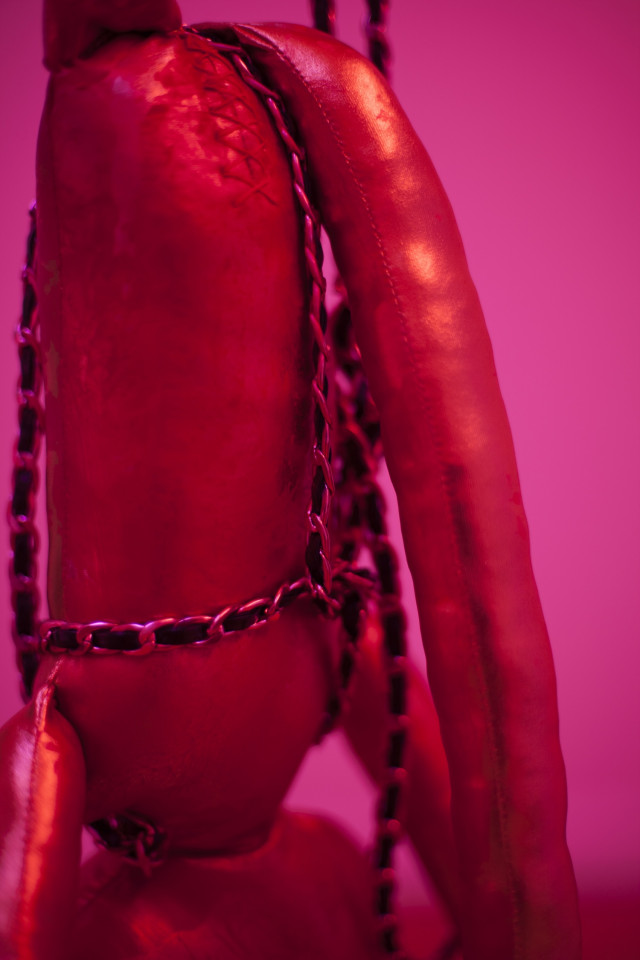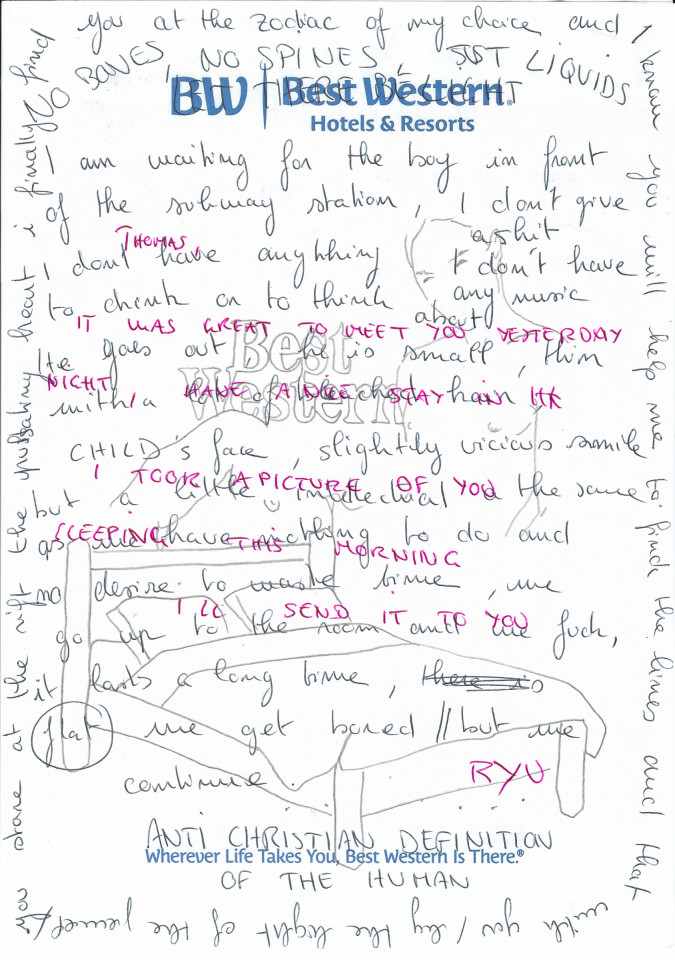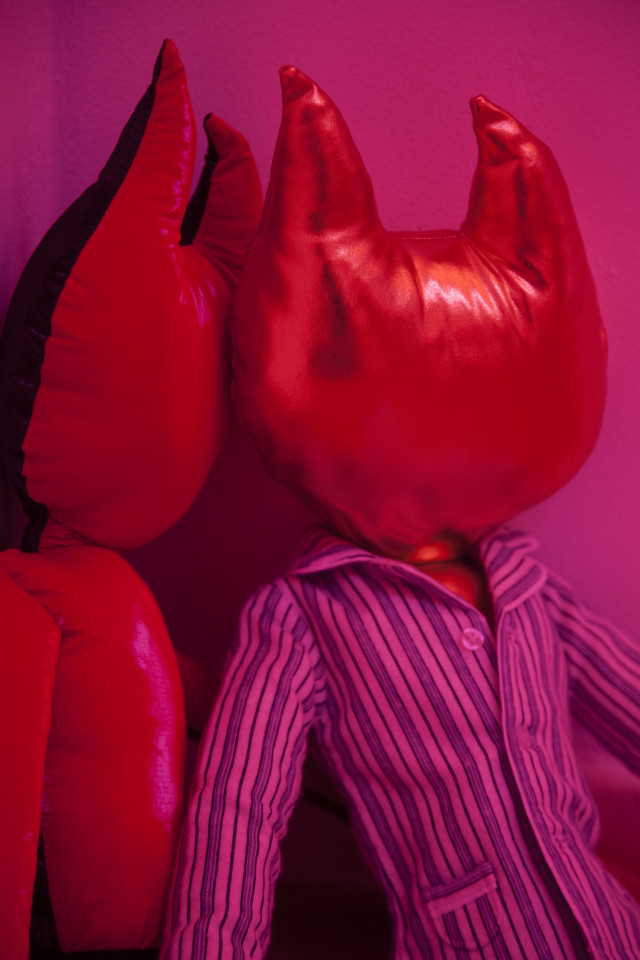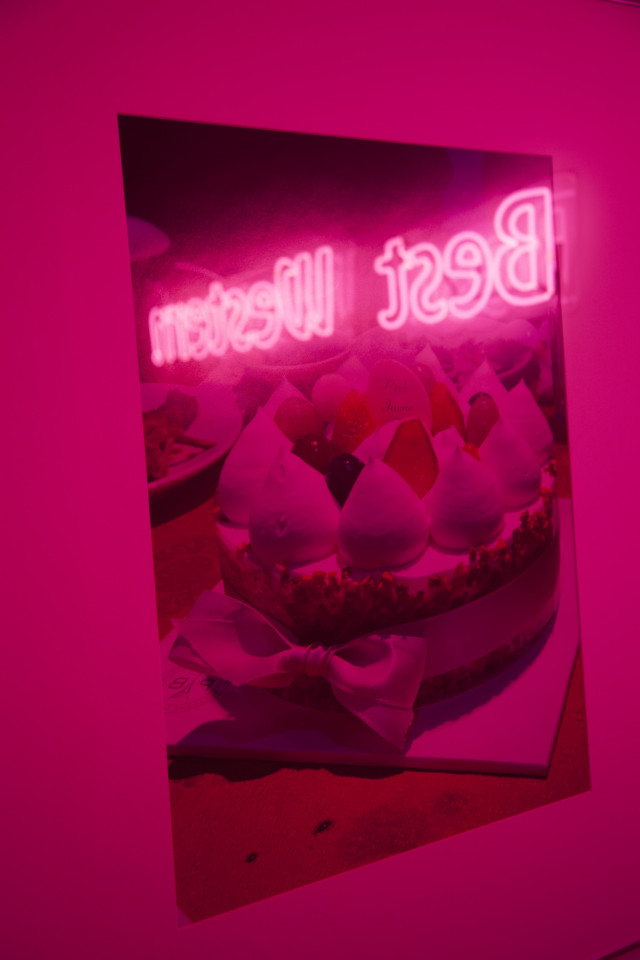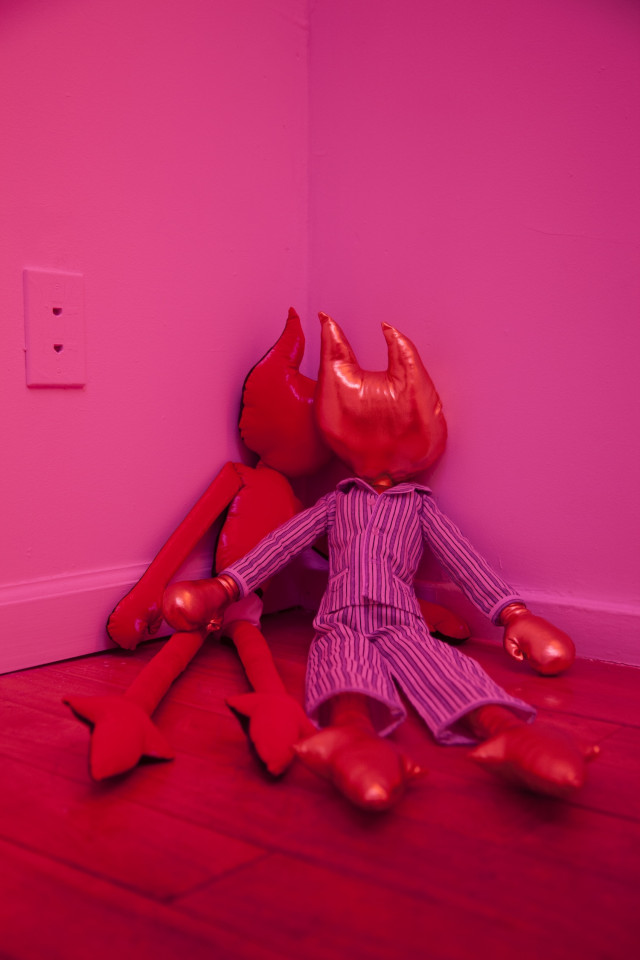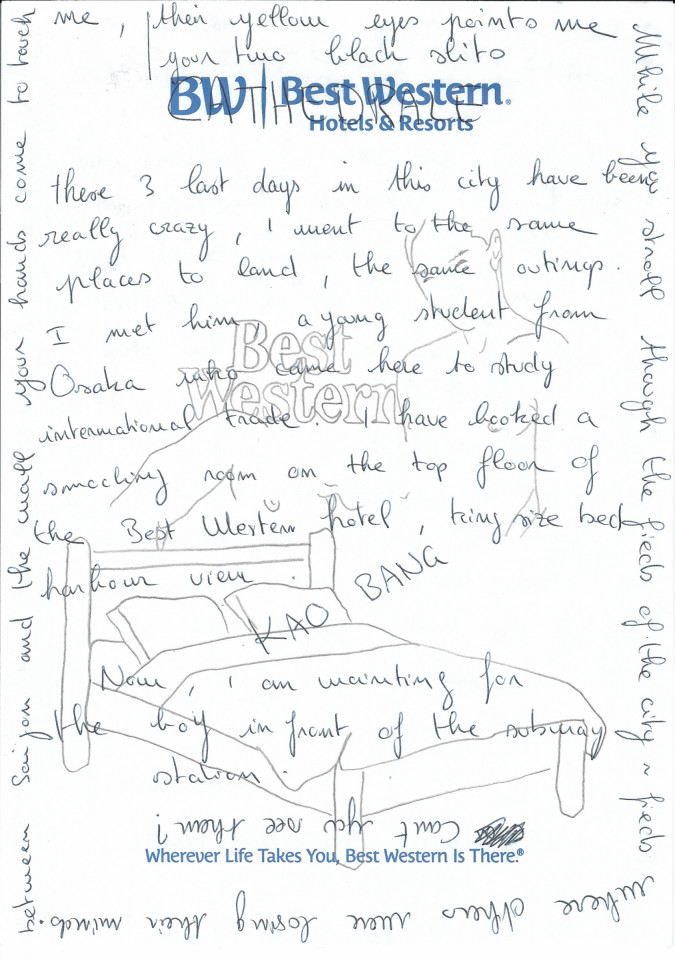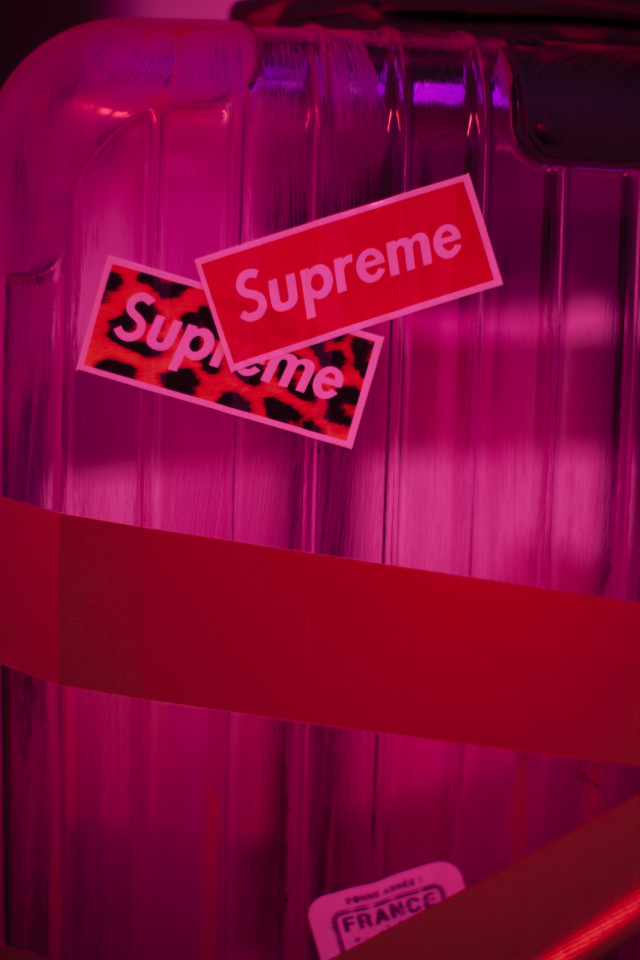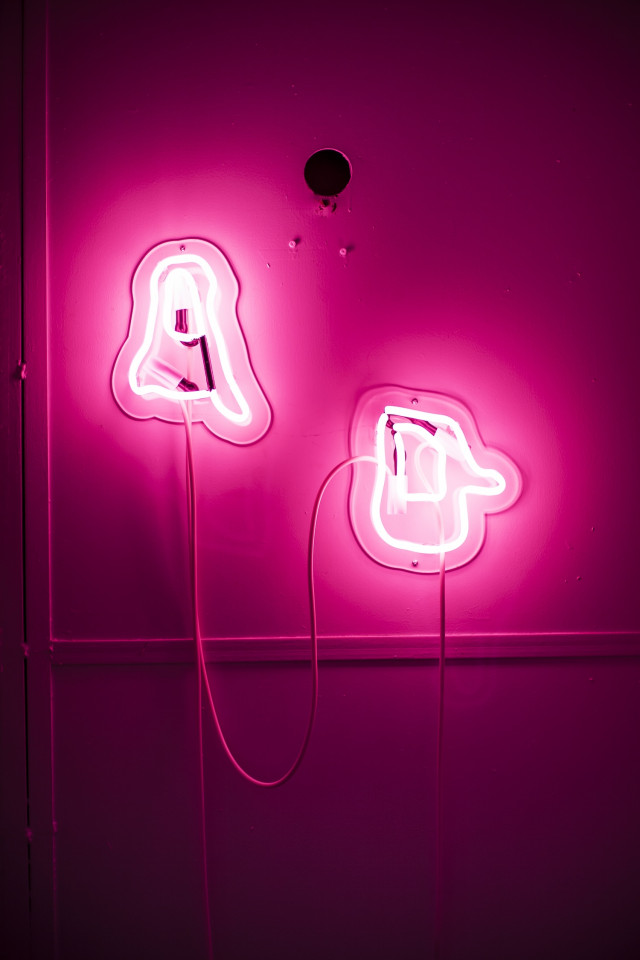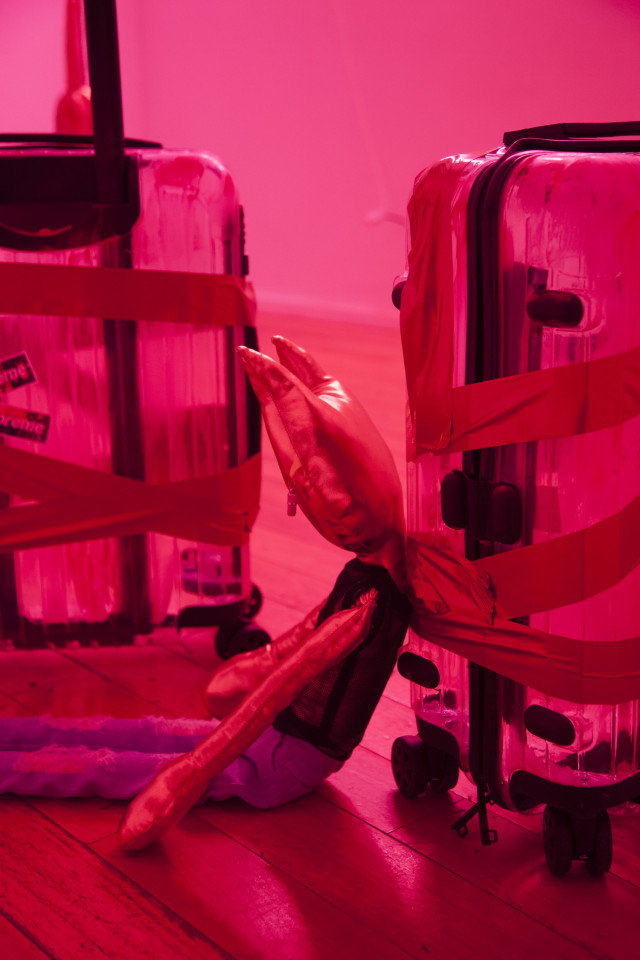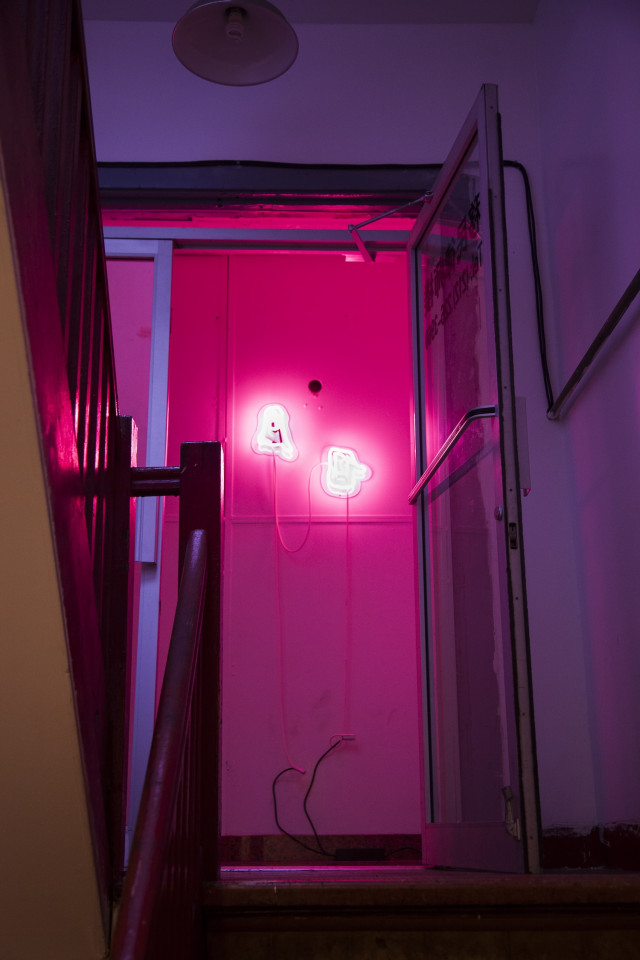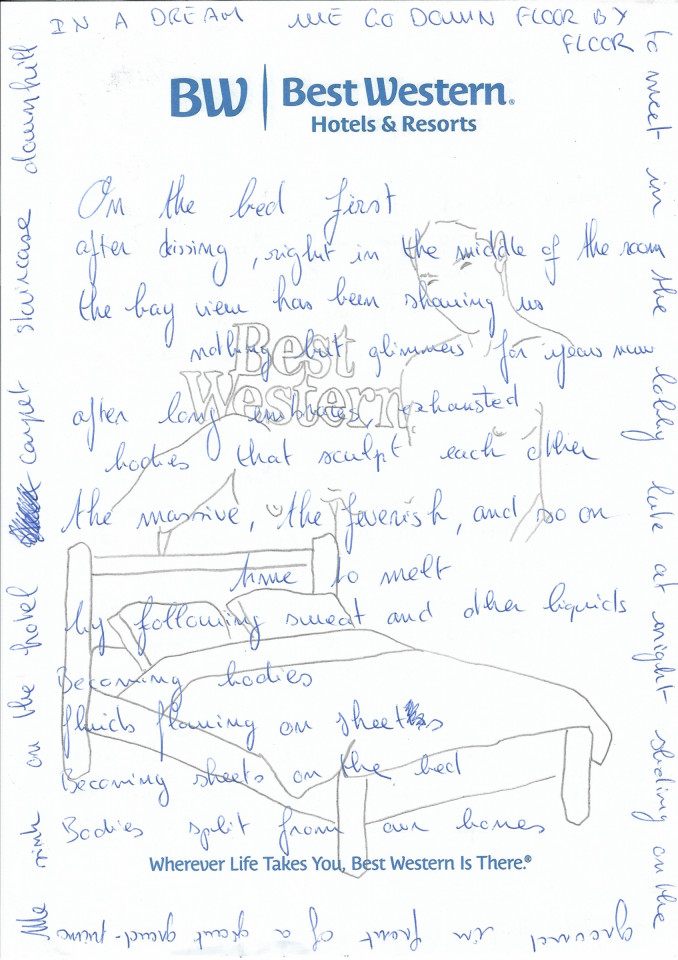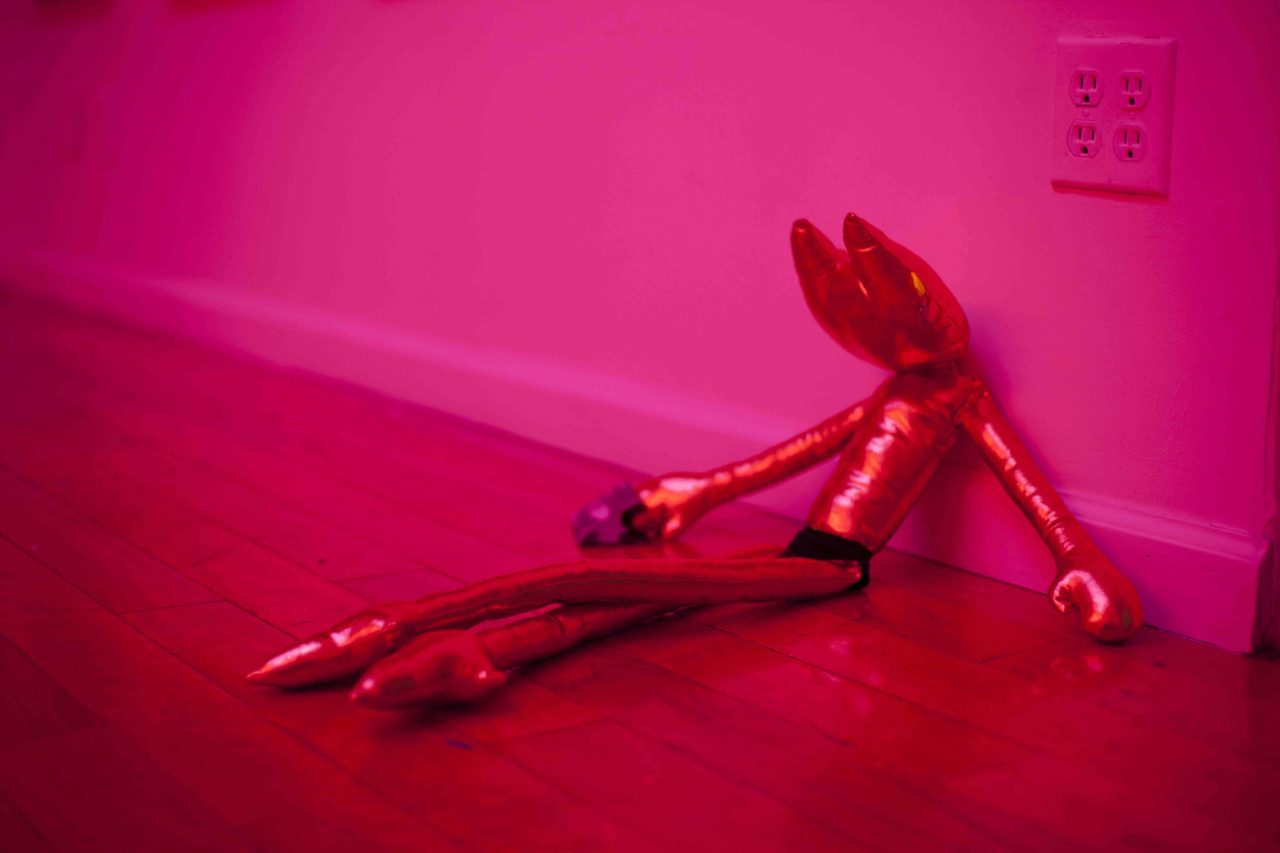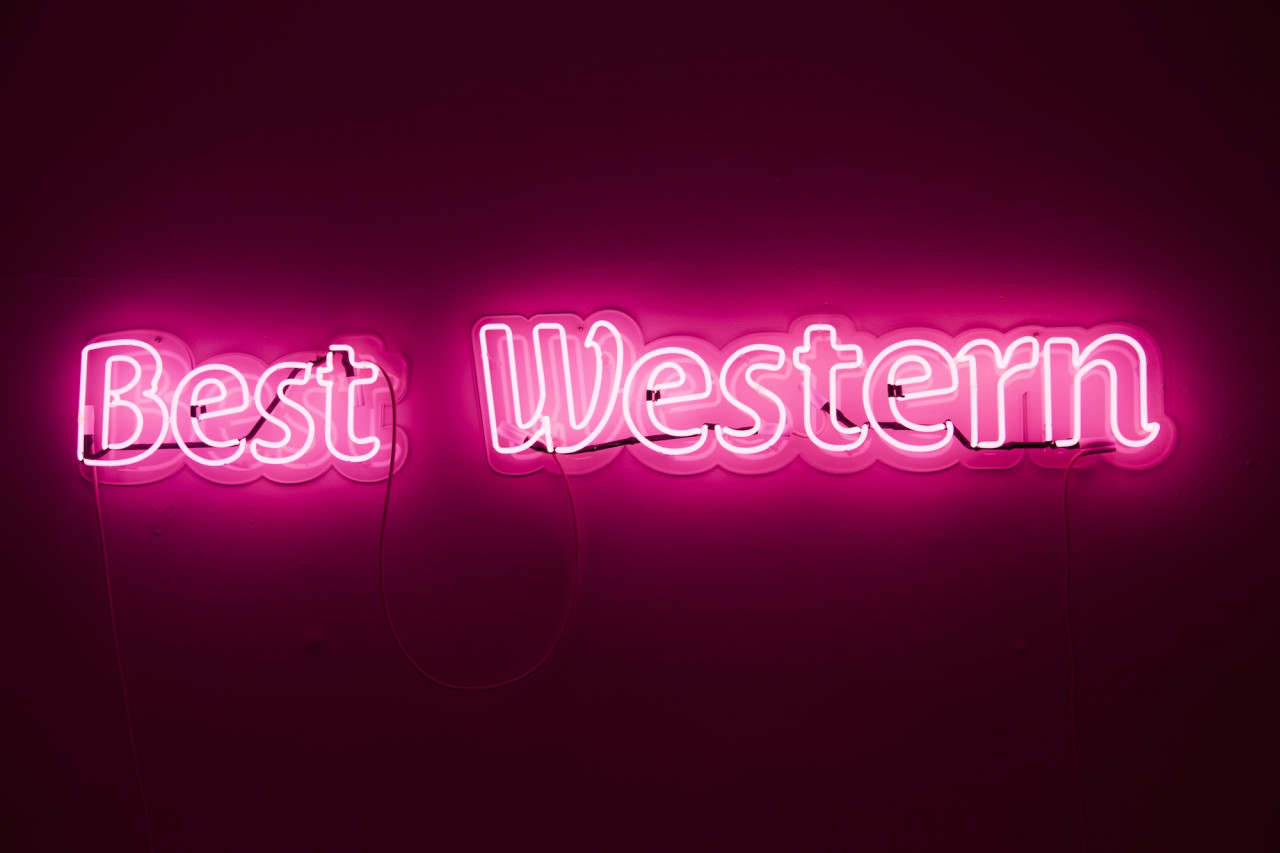Heartbreak, depression, and misanthropy—these are among the emotional themes explored by punk and hardcore bands described as “emo” by music critics in the 1980s. But the term has been rejected by almost every band it was applied to. This paradox only intensified in the mid aughts when the emo genre went mainstream; its growing army of fans, called “emo kids” or “emos,” similarly begged, “don’t label me.” This vehement rejection of the term is due in part to disparaging and homophobic stereotypes about emo kids based on their genderqueer fashion choices, public performances of emotional sensitivity, and willful identification as misfits. But perhaps most scathing was the condemnation from other nonconformists that emo kids were sellouts buying a prepackaged, apolitical version of punk rebellion from suburban shopping malls […]
Thomas Liu Le Lann, whose show “Best Western” is on view at Lubov in New York through November 10, depicts himself and his lovers as limp, cat-eared or bunny-eared dolls made of shiny black and purple vinyl, as if they were oversized toys sold to emo kids at Hot Topic. Like Bunny Rogers, he exploits the commercialized vernacular of emo to communicate melancholia, dysphoria, and lethargy.
– Thomas Love, Emo Artifice as an Archive of Feelings, Art In America, Oct 17, 2019 (extraits)


